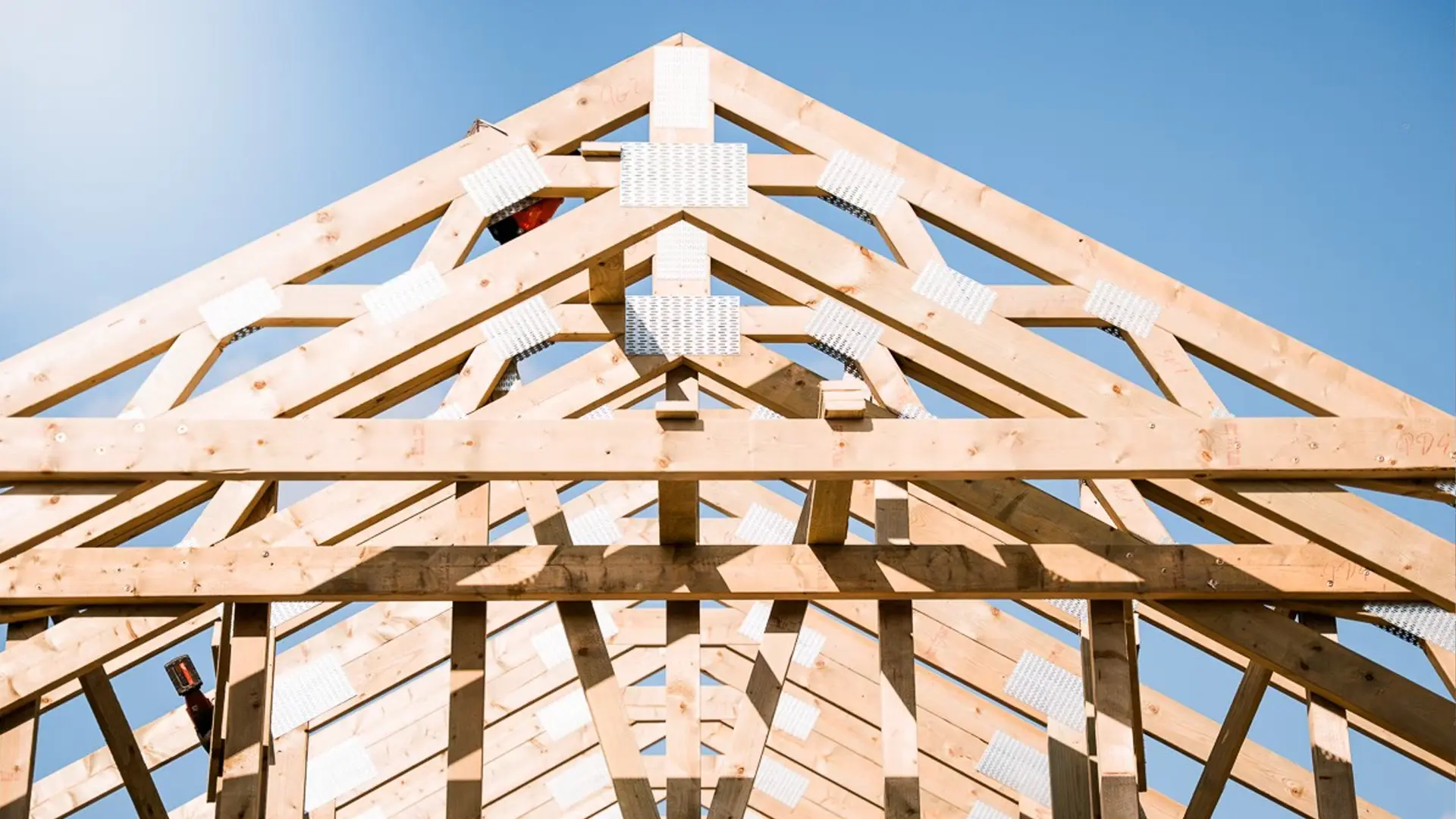Wooden ceiling is the horizontal structural element separating the storeys of a building, made of beams or prefabricated wooden elements. Its main function is to carry imposed loads, such as the weight of the floor, partition walls or furniture. The floor transfers loads to load-bearing walls or other structural elements.
In modern timber-frame houses wooden ceilings are usually made of KVH or BSH beams or Type I I-beams, which are characterised by high load-bearing capacity and low weight. The space between the beams is filled with an insulating material, such as mineral or cellulose wool, which improves the acoustic and thermal insulation of the partition.
The ceiling is covered from above with sheathing boards (e.g. OSB or Fermacell). On the other hand, a plasterboard ceiling is usually installed from below. The use of soundproofing and vapour control layers is also important in the construction of the ceiling, limiting the transfer of sound and water vapour between storeys.




